- Home
- Raymond Benson
The Black Stiletto
The Black Stiletto Read online
The Black Stiletto
ALSO BY THE AUTHOR
James Bond Novels
Zero Minus Ten
Tomorrow Never Dies (based on the screenplay)
The Facts of Death
High Time to Kill
The World is Not Enough (based on the screenplay)
DoubleShot
Never Dream of Dying
The Man with the Red Tattoo
Die Another Day (based on the screenplay)
The Union Trilogy (anthology)
Choice of Weapons (anthology)
Novels
Evil Hours
Face Blind
Tom Clancy’s Splinter Cell (as David Michaels)
Tom Clancy’s Splinter Cell: Operation Barracuda (as David Michaels)
Sweetie’s Diamonds
A Hard Day’s Death
Metal Gear Solid (based on the videogame)
Dark Side of the Morgue
Metal Gear Solid 2: Sons of Liberty (based on the videogame)
Hunt Through Napoleon’s Web (as Gabriel Hunt)
Homefront: The Voice of Freedom (cowritten with John Milius)
Torment
Artifact of Evil
Nonfiction
The James Bond Bedside Companion
Jethro Tull: Pocket Essential
Thrillers: 100 Must-Reads (contributor)
Tied-In: The Business, History, and Craft of Media Tie-In Writing (contributor)
The Black Stiletto
The First Diary—1958
A Novel
Raymond Benson
Copyright © 2011 by Raymond Benson
FIRST EDITION
All rights reserved. No part of this book may be reproduced in any form or by any electronic or mechanical means, including information storage and retrieval systems, without permission in writing from the publisher, except by a reviewer who may quote brief passages in a review.
This book is a work of fiction. Names, characters, businesses, organizations, places, and incidents either are the products of the author’s imagination or are used fictitiously. Any resemblance to actual events, businesses, locales, or persons, living or dead, is entirely coincidental.
ISBN: 978-1-60809-020-4
Published in the United States of America by Oceanview Publishing,
Longboat Key, Florida
www.oceanviewpub.com
10 9 8 7 6 5 4 3 2 1
PRINTED IN THE UNITED STATES OF AMERICA
For Randi
ACKNOWLEDGMENTS
The author wishes to thank the following individuals for their help: Michael Adkins, Tasha Alexander, Brian Babendererde, Michael A. Black, Michael Colby, Brad Hansen, Jeff Knox, Alisa Kober, Ganita Koonopakarn, Toby Markham, Christine McKay, James McMahon, Henry Perez, Heather La Bella, Justine Ruff, Pat and Bob, Frank, Susan, and everyone at Oceanview Publishing, and Peter Miller and the good folks at PMA Literary & Film Management, Inc.
Follow the Black Stiletto at www.theblackstiletto.net
AUTHOR’S NOTE
While every attempt has been made to ensure the accuracy of 1950s New York City and West Texas, the Second Avenue Gym, Shapes, and the East Side Diner are fictitious. Some liberties have been taken with architectural aspects of the Algonquin Hotel, the Plaza Hotel, and the New York Athletic Club Yacht Club, but for the most part the descriptions herein are extremely close to their actual layouts during the era depicted.
The Black Stiletto
1
Martin
THE PRESENT
My mother was the masked vigilante known as the Black Stiletto.
I just found this out today, and I’ve been her son for forty-eight years. All my life I knew she had some secrets, but needless to say, this is a bit of a shock.
At first I thought it was joke. I mean, come on. My mother? A costumed crusader? Yeah, tell me another one. And the Black Stiletto, of all people? No one in a million years would believe it. I’m not sure I do, and here I am being presented with hard evidence.
The Black Stiletto. One of the most famous persons on the planet.
And she’s slowly dying. In a nursing home.
Oh. My. God.
I really don’t know how I’m supposed to react to this.
It was sure something I didn’t expect when I was called to Uncle Thomas’s office this fine May afternoon. He’s not really my uncle; just a friend of the family. I suspect he was my mom’s lover at some point when I was a kid, but they remained friendly and then later he acted as her estate attorney. You see, my mom—Judy Talbot—is seventy-two years old and she’s got Alzheimer’s. It’s a terrible disease and it hit her hard and fast. It didn’t creep up on her like it does with most victims. It was almost as if she was okay one day, and then a couple of years later she couldn’t remember my name. Within five years of the onset of her illness, I had to put her into Woodlands North. An unpleasant but necessary thing to do; and I couldn’t have done it without Uncle Thomas. The ironic thing is that she’s somewhat okay physically. She was always in pretty good shape, even with all the drinking and depression. Then one day her mind shut down and she was no longer able to take care of herself. What bodily ailments she has now are simply due to atrophy from being held prisoner in a nursing home for the last two years. Yes, she’s dying, and it’s going to be slow and terrible. Her doctors don’t know how long it will take. It could be years, it could be a few months. One never knows with Alzheimer’s.
Uncle Thomas’s office is in Arlington Heights, Illinois. That’s a northwestern suburb of Chicago. I grew up there. I lived with my mom in a house near the downtown area, where we would catch a commuter train if we wanted to go into the big city.
Downtown Arlington Heights used to be a funky, quaint little place, certainly not much to talk about when I was a kid growing up in the sixties and seventies. Today they’ve built it up and made it more of a nightlife destination with movie theaters, trendy restaurants, nightclubs, and shops. But I don’t live there anymore.
I live a little farther north in a suburb called Buffalo Grove. I’m a single dad. My daughter lives with her mother—my ex-wife—in Lincolnshire. All these places are close together. So it’s not much of a schlep to see Uncle Thomas, or to visit my mom at Woodlands, which is in Riverwoods. And I do it. Visit my mom, that is. At least once a week. Aside from my daughter who sometimes visits her, I’m all she has—even though most of the time now she doesn’t know who I am.
Janie, Uncle Thomas’s secretary, welcomed me warmly when I walked into the office. We exchanged brief pleasantries and then she said I could go on in. I found him at his desk studying a pile of legal documents. Uncle Thomas is around my mother’s age and still works eight hours a day, seven days a week. He looked up at me, smiled, and stood. We greeted each other, shook hands, and then he told me to have a seat. He walked around the desk and shut the door so we could have some privacy.
“So what’s up?” I asked him. He had been fairly mysterious on the phone.
“Martin, I have some things I’m supposed to give you.” He gestured to his desk and indicated a small metal strongbox, the kind used to hold files or valuables. Next to it was a nine by twelve envelope with my name and address typed on it.
“What is it?”
“It’s from your mother.” When I furrowed my brow, he continued. “She set this up a long time ago. Fifteen years ago, to be precise. In the event that she died or became incapacitated, I was supposed to see that you got these things. This letter and this strongbox.”
“Where have they been all this time?” I asked.
“I’ve had them in safekeeping. In trust, so to speak.”
“Do you know what’s in them?”
“No, Martin, I don’t. Yo
ur mother was very clear about the contents being private and confidential. I’ve debated with myself for a while when I should release them to you. I suppose it’s time I stop the denial and admit your mother is indeed incapacitated. She will never recover from that horrible disease unless some kind of miracle cure is discovered, and the chances of that happening in her lifetime are unlikely. So, here you are. Sorry I’ve waited so long.”
I wasn’t upset with him. I understood his dilemma, but I was more concerned and curious about the stuff on the desk. What could she have possibly deemed so secretive?
“Well, let’s see it.” I held out my hand and he gave me the envelope first. It felt as if it contained a letter, certainly, and something metal and slightly heavy—a key to the strongbox perhaps? I opened the envelope and sure enough, a small key dropped into my lap. I picked it up and put it aside for the time being. I took out the letter and read it.
I recognized the typeface as belonging to an old electric typewriter we once had in the house. She had hand-dated the letter and signed the bottom—“Judith May Talbot.”
I had to read it three times before I could comprehend what she had written.
Uncle Thomas watched me eagerly. “You don’t have to tell me what it says if you don’t want to,” he prompted. He was obviously dying to know.
For several moments I sat in the chair dumbfounded. I wanted to laugh. In fact, I did laugh, I think. I asked Uncle Thomas if it was a joke. He replied that it wasn’t and then queried why I would ask that.
“Never mind,” I answered.
I read the letter again. Shook my head.
It was a confession. In it, my mother admitted her name was really Judith May Cooper and that she was the Black Stiletto. She had kept this secret to herself since the sixties, when she retired her costume, changed her name, and tried to lead a normal life. She anticipated my skepticism and explained that the contents of the strongbox would lead me to the proof. She also granted me the rights to her life story. In short, she was leaving it up to me whether or not I reveal her secret to the world.
I folded the letter and stuffed it back into the envelope. Then I nodded at the strongbox. “Let’s see that.” Uncle Thomas handed it to me, and I used the little key to unlock it. I wasn’t sure if I wanted him to see what was inside, and he sensed it.
“Maybe I should step outside?” he asked.
“Would you mind, Uncle Thomas?”
“Not at all, Martin. Just call me if you need me.”
He left the room and shut the door. I opened the lid and found a folded piece of paper, three keys on a ring, and some other trinkets. I removed and unfolded the paper, revealing a floor plan of some kind. I studied it for a few seconds and then realized it was the floor plan of our basement. In the house where I grew up. Where no one has lived for the past two years. It’s been on the market, but nobody was remotely interested in buying it. The real estate agent, Mrs. Reynolds, kept making the same old excuses—it’s a bad market, it’s the economy, the house needs fixing up, and so on.
So what were the keys for? Two of them were grey and appeared suitable for unlocking doors. The third was small and gold colored.
I looked at the floor plan again and then noticed a room that wasn’t supposed to be there.
Hold on.
A wall separated the basement from that new space—a wall I never knew I could go through. The floor plan indicated there was a door in it. I’d never seen a door there. One or two of the keys must unlock it. And if that was true, what was the gold key for?
Even more puzzling were the other items, which I picked up and examined, one by one.
A heart-shaped locket on a chain, silver-plated, I think.
A Kennedy/Johnson campaign button, from 1960.
And a small canister containing a reel of 8-mm film.
I quickly put everything back into the strongbox, stood, and carried it to the outer office. Uncle Thomas was by the coffee machine and Janie was still at her desk.
“All done?” he asked.
“Yeah. Um, thanks.”
“Is there anything I can do?”
“I don’t know yet.”
“You look a little pale. Is something wrong? What was in there, Martin? I assure you, as your mother’s attorney, I—”
“I know. I appreciate it. I may consult you. I just need to process this. I’ll call you later, okay?”
“Sure, Martin. Would you like a drink of water?”
I took him up on that.
The three-bedroom ranch house was a prewar affair on Chestnut that had seen better days. In 1970 I’m sure it was probably pretty nice. That was when my mom and I moved in. I was eight years old. Prior to that we had been all over. I was born in Los Angeles, but for the first few years of my life we were living on the road. I don’t remember much of it, but I do have fleeting memories of traveling in a car, stopping in lots of hotels, living in apartments here and there, and finally coming to Illinois. I do recall we were in a small apartment in Arlington Heights before we moved into the house, and I distinctly recollect the day mom took me to see it. She picked me up at school—second grade—and said she had a surprise for me. We rode in her dumpy ’64 Bonneville and there it was. A real house.
Unfortunately, Mom wasn’t the best homemaker in the world. She didn’t spend much time cleaning it or maintaining it properly. I didn’t notice how much it had gone into decline until after I’d graduated from high school, gone away to college, and come back for a visit in the early eighties. By then, mom had started drinking more than usual. She seemed okay, though. She wasn’t a drunk, at least not around me. There wasn’t much I could do about it. But she still worked out and went on her runs and looked fit. Mom always had a punching bag hanging from the basement ceiling and, I swear, every day of her life she went down and beat on it for a half hour. She may have been an alcoholic and all that, but it didn’t stop her from keeping her body toned.
As I visualized her slamming that punching bag over and over, day after day, I realized maybe this Black Stiletto stuff wasn’t all horseshit.
At any rate, I drove straight to the house from Uncle Thomas’s office. The FOR SALE sign was still in the front yard. It appeared that Mrs. Reynolds had replaced it recently. The last one was old and rusty, having been out there for a couple of years.
Yeah, the place was ugly. It needed a paint job in the nineties and here it was 2010. The real estate company took care of keeping the grass cut, but there were weeds everywhere. The shutters on the windows were broken. There were holes in the roof. Squatters wouldn’t want to stay there. It was no wonder it hadn’t sold. I really needed to get off my ass and hire someone to do some work.
I used my own key to get in the front door. The place smelled like mildew in that way old houses do. It was completely empty, for we’d moved out most of the furniture and Mom’s stuff long ago. There was nothing in it but the soiled carpet and a chair or two.
Mrs. Reynolds kept some tools in the kitchen, so I grabbed a flashlight before going downstairs. The basement was dark, cold, and dank. I switched on the single bulb in the ceiling and found what appeared to be animal droppings on the concrete floor. Squirrels, probably; hopefully not rats. There were a few empty cardboard boxes lying around. Mom’s punching bag was still hanging there in the middle of the room. I made my way to the wall in question and examined it. Looked to me like an ordinary wall made of, well, concrete. It was part of the foundation, directly under the stairs. There wasn’t a door. I couldn’t see anything except two blotches of caulk. One was eye level and the other a few feet below that. They seemed old and dry and completely flush with the concrete. I reached out to touch one and I felt some give. Using my fingertips, I pulled it away from the wall—it was actually a piece of hinged plaster! The caulked spots were really little covers built into the wall. And behind them were keyholes.
I quickly got the keys out of the strongbox and stuck one in the top lock. It turned easily. The second grey key worked,
too, and as soon as the door unlocked, the frame seemed to pop out of the wall a quarter-inch, allowing me to pull it open with my fingertips.
I must have stopped breathing when I aimed the flashlight inside the small, closet-like space.
Hanging on the back wall were two costumes. Easily recognizable ones. Two sets of the most famous costume in the world, I dare say.
The Black Stiletto.
I stepped inside and touched them.
In both cases, the pants and jacket were made of thin black leather. One outfit was made of thicker material than the other, but was basically the same. Knee-high black boots stood on the floor beneath them. A knapsack lay beside the boots. The single mask was a half-hood with holes for the eyes, but to me it always resembled those kinky S&M things you see in sex shops. The Black Stiletto sure had that dominatrix thing going for her, and that was way before that kind of imagery was in popular media.
The legendary knife—the stiletto—was in its sheath and mounted on the wall next to the costume.
Amazing. Totally mind-boggling.
Sitting on shelves built into the side of the closet were stacks of newspapers, photographs, and comic books preserved inside plastic bags. Black Stiletto comic books—not a lot, but some of the very first ones. Worth quite a bit now, I suspect. She must have bought them when they first came out.
On another shelf was a holster with a gun inside. I picked it up and inspected it. I don’t know much about guns, but I knew it was a semiautomatic of some kind. A Smith & Wesson, according to what was engraved on its side. Boxes of ammunition sat next to it on the shelf.
And then there were the little books. Diaries. A whole set of them. Each one was labeled with a year, starting with 1958.
Holy shit!
What had I just discovered? What had my dear mother left me?
Who the fuck was my mother?
I grabbed the first diary and went upstairs. I needed some air. This was all too much to swallow.

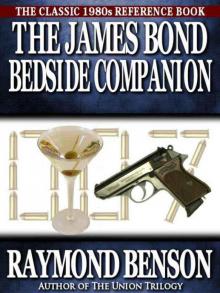 The James Bond Bedside Companion
The James Bond Bedside Companion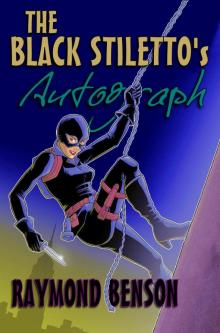 The Black Stiletto's Autograph
The Black Stiletto's Autograph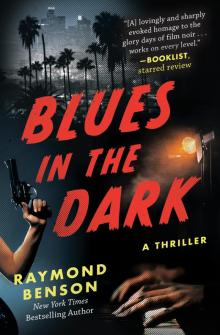 Blues in the Dark
Blues in the Dark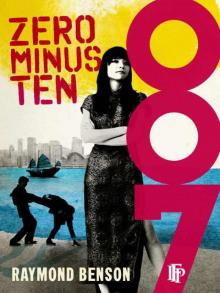 Zero Minus Ten
Zero Minus Ten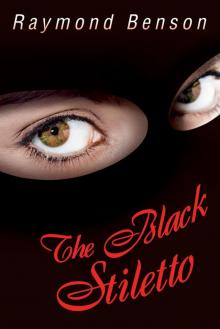 The Black Stiletto
The Black Stiletto Doubleshot
Doubleshot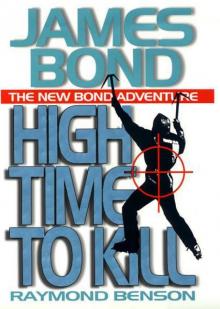 High Time To Kill rbb-3
High Time To Kill rbb-3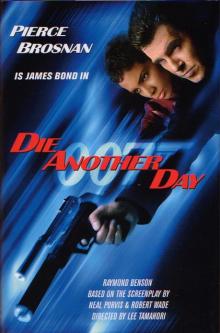 Bond Movies 07 - Die Another Day
Bond Movies 07 - Die Another Day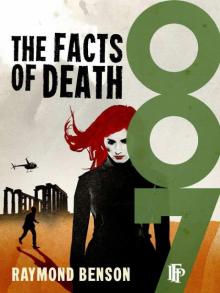 The Facts Of Death
The Facts Of Death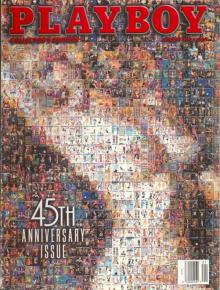 Midsummer Night's Doom
Midsummer Night's Doom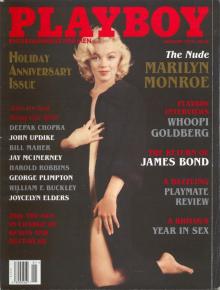 Blast from the Past
Blast from the Past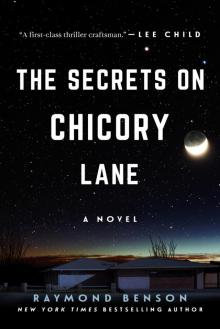 The Secrets on Chicory Lane
The Secrets on Chicory Lane High Time To Kill
High Time To Kill The Black Stiletto: Black & White
The Black Stiletto: Black & White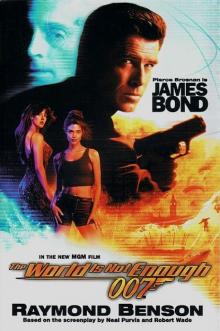 The World Is Not Enough jb-1
The World Is Not Enough jb-1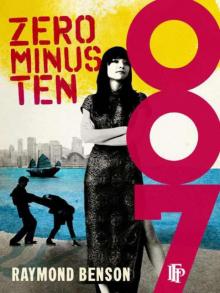 Zero Minus Ten rbb-1
Zero Minus Ten rbb-1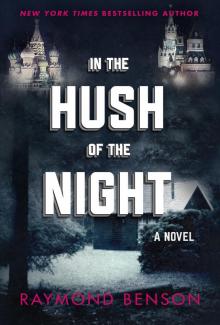 In the Hush of the Night
In the Hush of the Night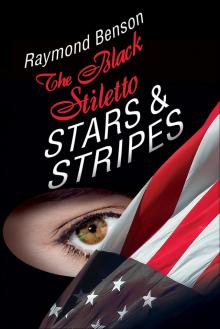 The Black Stiletto: Stars & Stripes
The Black Stiletto: Stars & Stripes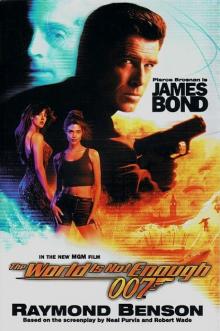 Bond Movies 06 - The World Is Not Enough
Bond Movies 06 - The World Is Not Enough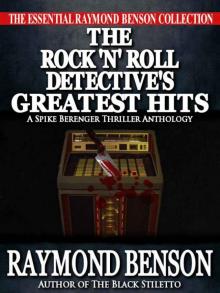 The Rock 'n Roll Detective's Greatest Hits - A Spike Berenger Anthology
The Rock 'n Roll Detective's Greatest Hits - A Spike Berenger Anthology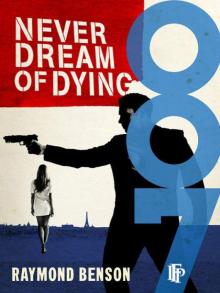 Never Dream Of Dying
Never Dream Of Dying